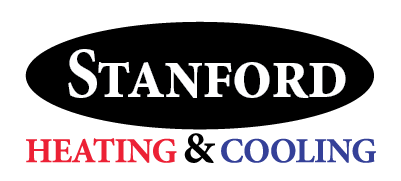
To combat increasing energy expenses and embrace sustainability, many homeowners are looking for ways to enjoy the same standards of comfort while reducing utility bills. Included in the Inflation Reduction Act, federal tax credits are available for upgrading to more efficient HVAC systems, such as air conditioners. These credits offer big savings, provided that homeowners work with eligible equipment and submit the appropriate form.
If you’re trying to avoid a long process, we’re offering to help! Stanford Heating & Cooling hopes this guide will provide all the information necessary to take full advantage of HVAC tax credits this year. Here’s what you’ll need to do.
How Do These Tax Credits Work?
These valuable tax credits for upgrading your home to be more energy-efficient are just one small part of the recent Inflation Reduction Act. With the higher cost of energy making an impact, helping more homeowners upgrade their equipment is always beneficial. The main intention of these credits is to help pay for high efficiency HVAC equipment and other projects. Of particular importance are the Residential Clean Energy Credit and the Energy Efficiency Home Improvement Credit.
But keep in mind, to claim your credits, you’ll need a completed IRS Form 5695. Additionally, this form has to be submitted within the same tax year your upgrades were installed, not bought.
Energy Efficiency Home Improvement Credit
Through 2032, the Energy Efficiency Home Improvement Credit provides up to $3,200 annually for making your home more energy-efficient. This can be up to 30% of the total project’s cost. Keep in mind that in order to be eligible for the maximum amount, it means making severel investments. For example, you’ll receive up to $2,000 for high efficiency heat pump systems. This can be combined with the remaining $1,200 in credits for other eligible upgrades made within the tax year.
While heat pumps are a great use of the program, other HVAC upgrades like efficient furnaces and air conditioners also qualify. You’ll need to confirm the make and model’s energy efficiency rating is sufficient to qualify.
Residential Clean Energy Credit
The Residential Clean Energy Credit provides 30% savings on a wide range of residential clean energy equipment upgrades. Eligibility only applies to homeowners seeking to update existing or newly constructed homes. While the Home Improvement Credit highlights utilities and HVAC systems, this credit targets renewable energy sources like solar and wind energy.
Some provisions of the tax credit include requiring the installation project to be finished between 2022 and 2032. But at the same time, homeowners can carry forward excess credit to offset future tax obligations. This is a great way to spread out costs and keep them more manageable.
Additional Qualifications for Energy Tax Credits
Because HVAC systems are one of the major reasons for high energy bills, these tax credits can guide you to the most energy-efficient options. But home energy efficiency can be improved in many other ways. Apart from the previously listed HVAC upgrades, {you could also choose|other eligible items include|you also have access to:
- Energy-saving heat pump water heating systems
- Modern electrical panel improvements
- Upgraded electrical wiring
- Insulation, air sealing and ventilation enhancements
- Energy-efficient cooking appliances like stoves, cooktops, and ovens
- Heat pump clothes dryers
- Water boilers
Just like with installing one or more HVAC systems, you’ll need to check that your preferred make and model features the eligible energy efficiency ratings.
Three Tips for Making the Most of 2024 HVAC Tax Credits
While all the listed upgrades can enhance your home's energy performance, some planning ahead will ensure they offer the most long-term benefits. Maximize your HVAC tax credits with the following three tips:
- Conduct a home energy audit to identify impactful upgrades. Trust experienced HVAC companies to pinpoint essential products and services.
- Enhance your home's envelope by addressing inefficient windows and doors.
- Look into rebates for clean energy projects from utilities. Renewable sources like solar, wind, and geothermal contribute to community power grid sustainability.
- Don’t forget financing options from local service companies, which can help reduce costs even more.
Stanford Heating & Cooling Can Help You Secure HVAC Credits for 2024
Partner with local HVAC professionals like Stanford Heating & Cooling for help with home energy audits and new installation projects. Our experienced installers can deliver whatever you need for a more energy-efficient home.

